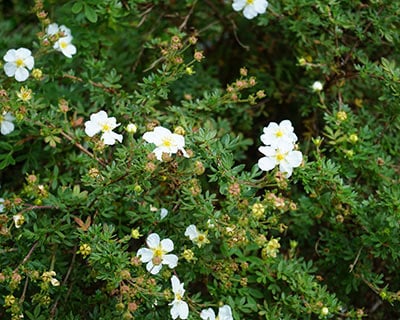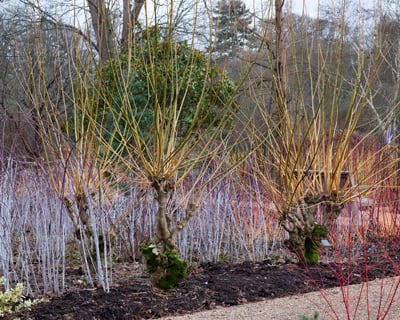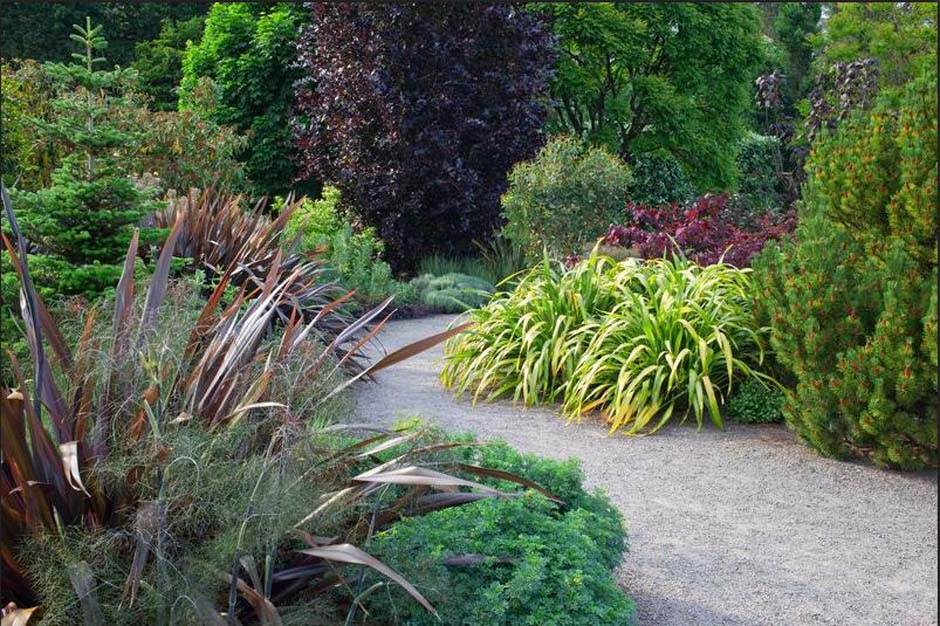10 award-winning (AGM) cold-tolerant plants
Cold, frosty conditions needn’t limit planting choices. With the right selection, it’s possible to create structure, colour and interest even in the harshest winters
In colder gardens, frost pockets and biting winds can make it difficult to find plants that truly thrive. Yet many species are perfectly adapted to such extremes, their resilience honed in regions where the ground freezes solid for months at a time.
Among the best are RHS Award of Garden Merit (AGM) winners – a collection of
Although the eastern hemlock, Tsuga canadensis, is a stately forest tree unsuitable for most gardens, the selection Tsuga canadensis ‘Jeddeloh’ is a compact and slow-growing dwarf conifer with branches that arch neatly over each other to form a distinctive, layered mound. New growth is a fresh, bright green contrasting with the darker, older foliage. Height 1m (3ft). Hardiness rating H7.
Tough yet full of style, Sambucus racemosa ‘Sutherland Gold’ brings elegance to the dependable elder. Its jagged, bright yellow foliage holds its colour well without scorching in full sun. In late spring, flat heads of white flowers appear, followed in summer by heavy clusters of red berries that stand out against the golden leaves. Height 2m (6 1/2ft). Hardiness rating H7.
Growing wild as far north as the Arctic Circle, Potentilla fruticosa is exceptionally hardy, even in damp or heavy soil. Among its many cultivars, Potentilla fruticosa ‘Abbotswood’ stands out for its pure white flowers set against blue-tinted foliage – a fresh and elegant combination. The blooms open continuously from late spring into autumn, providing long-lasting colour and reliability. Height 90cm (3ft). Hardiness rating H7.
Specimen evergreens full of character can be hard to find, but Pinus mugo ‘Mops’ combines all the charm of mature pines at a very manageable size. Its compact, robust, and bushy growth makes it ideal for the back of a raised bed, providing support for spring-flowering clematis and a valuable nesting site for birds. Preferring well-drained soil, it is a hardy, low-maintenance choice. Height 60cm (2ft). Hardiness rating H7.
Most dogwoods grown for winter stem colour have red twigs, but Cornus sericea ‘Flaviramea’ stands out with striking yellow stems that gleam in the winter sun. When pruned hard each spring, it forms bright, sunny thickets, while its leaves provide the bonus of red and yellow autumn colour. Thriving in damp soil yet adaptable, it pairs well with dusky hellebores. Height 1m (3ft) when pruned annually. Hardiness rating H7.
This intriguing, flat-topped version of the familiar Christmas tree, Picea abies ‘Nidiformis’, is packed with horizontal branches, giving it a distinctive, layered appearance. Especially attractive when dusted with winter frost, it develops into a specimen wider than it is tall and grows slowly, making it ideal for a container or a small raised bed. Height 60cm (2ft). Hardiness rating H7.
Physocarpus opulifolius is an exceptionally hardy deciduous shrub that has gained popularity in recent years. Physocarpus opulifolius ‘Dart’s Gold’ was the first widely grown cultivar, with bright yellow spring and summer foliage that fades to pale green but rarely scorches, even in hot, dry conditions. It develops a slightly arching habit as it matures and produces clusters of white flowers followed by black berries. Height to 1.2m (4ft). Hardiness rating H7.
Juniperus × pfitzeriana ‘Sulphur Spray’ makes a striking specimen without ever growing too large, and its hardy constitution adds to its appeal. Bright yellow summer foliage turns to a creamy shade in winter, while its angular, semi-prostrate habit with drooping shoot tips is distinctive, making it attractive against plants with bronze or crimson foliage. Height to 1.5m (5ft). Hardiness rating H6.
The heather that carpets moors and uplands, Calluna vulgaris, has produced many cultivars, and those with
Well-behaved conifers are always welcome, and Chamaecyparis pisifera ‘Filifera Aurea’, though its name is a mouthful, is modest in size and easy to please. Slowly forming an attractively informal mound, its slender, thread-like golden foliage hangs in graceful, weeping sprays. A mature plant looks especially lovely surrounded by scillas or heathers. It may scorch in daylong sun, but usually only in dry soil. Height to 2m (6ft). Hardiness rating H7.


